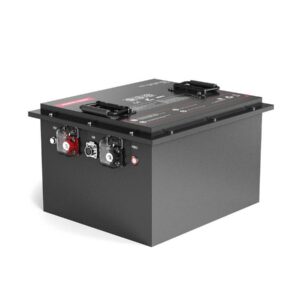
Can a 200Ah battery run AC?
A 200Ah battery can power an AC unit if the system voltage, inverter efficiency, and AC wattage align. For example, a 12V 200Ah LiFePO4 battery stores 2.4kWh—enough to run a 500W AC for ~4 hours at 85% efficiency. However, startup surges (2–3x rated watts) demand inverters with high surge tolerance. Always match battery capacity to the AC’s runtime needs and include a 20% buffer for voltage sag.
What Is the Best Battery for a Diesel Pickup Truck?
What factors determine if a 200Ah battery can run an AC?
AC wattage, battery voltage, and inverter efficiency dictate feasibility. A 200Ah 24V battery holds 4.8kWh—double the energy of a 12V system—extending runtime significantly. Pro Tip: Use LiFePO4 batteries for faster recharge and deeper discharge cycles versus lead-acid.

Practically speaking, runtime hinges on energy math: (Battery Ah × Voltage × Inverter Efficiency) ÷ AC Watts = Hours. For a 24V 200Ah battery powering a 1,000W AC with 90% inverter efficiency: (200 × 24 × 0.9) / 1,000 = ~4.3 hours. But what if the AC has a 3,000W startup surge? Inverters must handle 3x rated watts momentarily—undersized units trip or fail. For example, a 1,000W AC paired with a 24V 200Ah battery needs a 3,000W surge-capable inverter.
How do LiFePO4 and lead-acid batteries compare for AC use?
LiFePO4 offers 3x cycle life, 95% efficiency vs. lead-acid’s 80%, making them superior for frequent AC loads. They also discharge safely to 90% DoD, while lead-acid degrades past 50% DoD.
Beyond chemistry, weight and space matter. A 200Ah LiFePO4 battery weighs ~55 lbs—half of a comparable lead-acid unit. For off-grid setups, this efficiency gap is critical. Imagine running a 12,000 BTU AC (1,400W) nightly: LiFePO4 lasts 1,200 cycles at 90% DoD, whereas lead-acid degrades after 300 cycles. Pro Tip: Pair batteries with hybrid inverters for solar charging—LiFePO4 absorbs 1C charge rates (200A for 200Ah), slashing recharge time. But can lead-acid handle daily deep cycles? No—sulfation destroys plates within months.
| Parameter | LiFePO4 | Lead-Acid |
|---|---|---|
| Cycle Life | 3,000–5,000 | 300–500 |
| Efficiency | 95% | 80% |
| Weight (200Ah) | 55 lbs | 130 lbs |
What inverter specs are needed for AC compatibility?
Pure sine wave inverters with 3x surge capacity prevent motor damage. A 2,000W inverter handles 600W AC units but requires 6,000W surge support.
Transitionally, low-frequency inverters better manage surges but cost 2x more than high-frequency models. For example, a 24V 200Ah system with a 5,000W low-frequency inverter can start a 15,000 BTU AC (1,800W running / 5,400W surge). Pro Tip: Size inverters to 125% of the AC’s running watts—so a 1,500W AC needs a 1,875W inverter. But what if you’re using multiple appliances? Aggregate all loads: AC + fridge + lights = total inverter capacity.
How can I extend AC runtime on a 200Ah battery?
Lower AC wattage, insulate rooms, and use battery banks. A 500W portable AC doubles runtime vs. a 1,000W window unit.
For perspective, a 12V 200Ah battery (2.4kWh) with a 95% efficient inverter provides 2.28kWh usable. A 500W AC runs for 4.5 hours, but adding a second 200Ah battery in parallel extends that to 9 hours. Alternatively, upgrading to 48V quadruples energy without increasing Ah—48V 200Ah = 9.6kWh. Real-world example: Off-grid cabins use 48V LiFePO4 banks with 18 SEER mini-splits (30% more efficient than standard units).
| Strategy | Runtime Gain | Cost |
|---|---|---|
| Lower Thermostat | 5–10% | $0 |
| Add 200Ah Battery | 100% | $1,200 |
| Upgrade to 48V | 300% | $3,500+ |
Battery Expert Insight
FAQs
Can a 200Ah car battery run a home AC?
No—car batteries are designed for short bursts, not sustained AC loads. Deep cycling them causes rapid failure.
How many solar panels recharge a 200Ah AC battery?
For a 24V 200Ah LiFePO4 (4.8kWh), you’ll need 1,000W solar panels (4x 250W) generating 5+ sun hours daily.
Does inverter type affect battery lifespan?
Yes—modified sine wave inverters create harmonic distortion, stressing batteries. Pure sine wave preserves cycle life.
